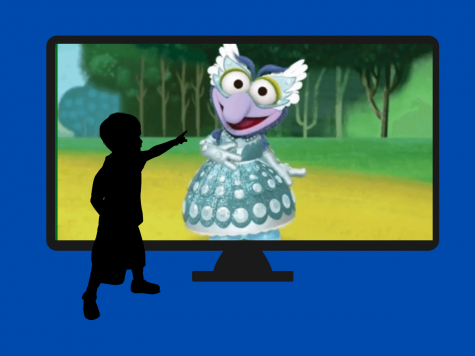Hands-on lessons allow students to imitate real-life concepts in classrooms
With an increasing reliability on technology in current society, hands-on lessons in classrooms have diminished significantly. Technology in the classroom can create a distraction and therefore hinder learning. Hands-on learning is a form of education in which children learn by doing, where the student engages with the subject to solve a problem or create something. This can be seen in BG classrooms such as in AP Psychology, where students are able to build edible neurons with candy and build a brain out of materials from home.
“Since the students were able to pick which materials they used to represent each of the nervous system functions in the build-a-brain activity, they were able to memorize the functions better,” AP Psychology teacher Jim Farrell said. “Student involvement goes up and their enjoyment goes up as well.”
Hands-on is by no means a new movement in the classroom. That being said, even today, many schools find it difficult to incorporate hands-on projects and principles into student work, especially in AP classes. With so many standards that need to be met within education today, hands-on lessons are still in the process of being formatted into classrooms throughout the world today. According to Farrell, many teachers in the district attend professional teaching conferences to get good ideas for future hands-on lessons.
“For example, the increasing enrollment in AP classes and expectations of the curriculum demand that certain topics be covered by a big, looming deadline, leaving little flexibility in teaching certain lessons,” senior Ellie Sander said. “However, I do believe that hands-on learning is a positive since most of us learn from experience.”
Beyond simply leading to better engagement, hands-on learning allows students to practice the skills that they have already learned. Students experience a huge increase in the amount of information that they retain when given the opportunity to practice what they are learning in the form of hands-on training.
“In Human Physiology, to study different internal systems, we dissect rabbits,” senior Nolan Son said. “Instead of reading articles and taking more notes, in the future we will study the internal organs and continue similar hands-on lessons.”
There is often a misconception that technology is streamlining education, but an iPad cannot give you the understanding of, for example, how a rabbit’s stomach feels and where this lies in relation to other organs.
Technology is affecting student learning because in general, society is entering a world where technological advancement has taken the forefront. Although some argue that apps and google earth allow people to get a hands-on experience through technology, it can actually disconnect students from social interactions where they could have been seen making a map of the world or using group collaboration. There are only so many apps to use on an iPad, and after a while, they can become dull and repetitive. As a result of hands-on projects, students will learn to be dynamic in how they learn and interact with others.
Kinesthetic learning, where a student carries out physical activities rather than listening to a lecture, is the most popular type of learning with students. ‘Doing,’ such as hands-on learning, helps them to gain a better understanding of the material.
“We know that kinesthetic learning styles are more effective,” Farrell said. “It is just difficult to try to incorporate hands-on learning into every topic we teach.”
Hands-on learning doesn’t need to be something that requires out-of-reach resources. It is more about getting creative and being willing to witness some trial and error. This is exemplified through classes at BG such as AP Psychology in the build-a-brain project and in AP Chemistry where students participate in many hands-on labs.
“My favorite hands on lab was the lab where we investigated which chemicals would alter the color of fire,” Son said. “This was a good project because there was no variation that students could experience.”
While it can seem impossible to break away from the lectures and textbooks, programs that rely on hands-on learning increase retention, provide a more engaging way to learn, develop critical thinking skills and have a real-world experience to guide students in the future.
“I feel that hands-on learning in the big-picture will always be a concept that students and I will benefit from,” Sander said. “Being innovative and reshaping the material can help break me and other students out of a routine.”




